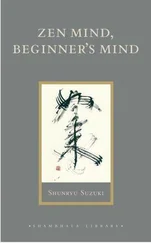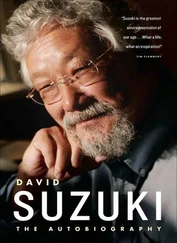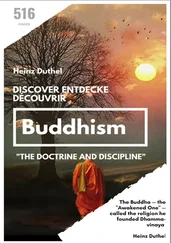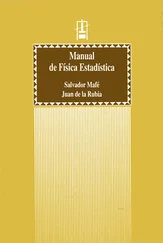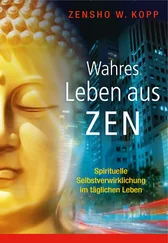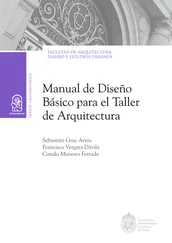Teitaro Suzuki - Manual of Zen Buddhism
Здесь есть возможность читать онлайн «Teitaro Suzuki - Manual of Zen Buddhism» весь текст электронной книги совершенно бесплатно (целиком полную версию без сокращений). В некоторых случаях можно слушать аудио, скачать через торрент в формате fb2 и присутствует краткое содержание. Жанр: Религиоведение, Религия, Руководства, на английском языке. Описание произведения, (предисловие) а так же отзывы посетителей доступны на портале библиотеки ЛибКат.
- Название:Manual of Zen Buddhism
- Автор:
- Жанр:
- Год:неизвестен
- ISBN:нет данных
- Рейтинг книги:3 / 5. Голосов: 1
-
Избранное:Добавить в избранное
- Отзывы:
-
Ваша оценка:
- 60
- 1
- 2
- 3
- 4
- 5
Manual of Zen Buddhism: краткое содержание, описание и аннотация
Предлагаем к чтению аннотацию, описание, краткое содержание или предисловие (зависит от того, что написал сам автор книги «Manual of Zen Buddhism»). Если вы не нашли необходимую информацию о книге — напишите в комментариях, мы постараемся отыскать её.
Manual of Zen Buddhism — читать онлайн бесплатно полную книгу (весь текст) целиком
Ниже представлен текст книги, разбитый по страницам. Система сохранения места последней прочитанной страницы, позволяет с удобством читать онлайн бесплатно книгу «Manual of Zen Buddhism», без необходимости каждый раз заново искать на чём Вы остановились. Поставьте закладку, и сможете в любой момент перейти на страницу, на которой закончили чтение.
Интервал:
Закладка:
V. MUSO KOKUSHI'S ADMONITION
I have three kinds of disciples: those who, vigorously shaking off all entangling circumstances, and with singleness of thought apply themselves to the study of their own [spiritual] affairs, are of the first class. Those who are not so single-minded in the study, but scattering their attention are fond of book-learning, are of the second. Those who, covering their own spiritual brightness, are only occupied with the dribblings of the Buddhas and Fathers are called the lowest. As to those minds that are intoxicated by secular literature and engaged in establishing themselves as men of letters and are simply laymen with shaven heads, they do not belong even to the lowest. As regards those who think only of indulging in food and sleep and give themselves up to indolence-could such be called members of the Black Robe? They are truly, as were designated by an old master, clothes-racks and rice-bags. Inasmuch as they are not monks, they ought not to be permitted to call themselves my disciples and enter the monastery and sub-temples as well; even a temporary sojourn is to be prohibited, not to speak of their application as student-monks. When an old man like myself speaks thus, you may think he is lacking in all-embracing love, but the main thing is to let them know of their own faults, and, reforming themselves, to become growing plants in the patriarchal gardens.
VI. HAKUIN'S “SONG OF MEDITATION”
Sentient beings are primarily all Buddhas:
It is like ice and water,
Apart from water no ice can exist;
Outside sentient beings, where do we find the Buddhas?
Not knowing how near the Truth is,
People seek it far away,—what a pity!
They are like him who, in the midst of water,
Cries in thirst so imploringly;
They are like the son of a rich man
Who wandered away among the poor.
The reason why we transmigrate through the six worlds
Is because we are lost in the darkness of ignorance;
Going astray further and further in the darkness,
When are we able to get away from birth-and-death?
As regards the Meditation practised in the Mahayana,
We have no words to praise it fully:
The virtues of perfection such as charity, morality, etc.,
And the invocation of the Buddha's name, confession, and ascetic discipline,
And many other good deeds of merit,—
All these issue from the practice of Meditation;
Even those who have practised it just for one sitting
Will see all their evil karma wiped clean;
Nowhere will they find the evil paths,
But the Pure Land will be near at hand.
With a reverential heart, let them to this Truth
Listen even for once,
And let them praise it, and gladly embrace it,
And they will surely be blessed most infinitely.
For such as, reflecting within themselves,
Testify to the truth of Self-nature,
To the truth that Self-nature is no-nature,
They have really gone beyond the ken of sophistry.
For them opens the gate of the oneness of cause and effect,
And straight runs the path of non-duality and non-trinity.
Abiding with the not-particular which is in particulars,
Whether going or returning, they remain for ever unmoved;
Taking hold of the not-thought which lies in thoughts,
In every act of theirs they hear the voice of the truth.
How boundless the sky of Samadhi unfettered!
How transparent the perfect moon-light of the fourfold Wisdom!
At that moment what do they lack?
As the Truth eternally calm reveals itself to them,
This very earth is the Lotus Land of Purity,
And this body is the body of the Buddha.
VI. THE BUDDHIST STATUES AND PICTURES IN A ZEN MONASTERY
Visitors to a Zen monastery in Japan will be greeted by various Buddhist figures enshrined in the different parts of the institution. This section is devoted to the description of such figures.
I. THE BUDDHA
Each Buddhist sect in Japan has its own Honzon , i.e. “the chief honoured one” as its main object of worship: for instance, the Jodo and the Shin have Amida Nyorai; the Shingon, Dainichi Nyorai (Mahavairocana); the Nichiren and the Zen, Shaka Nyorai (Sakyamuni). But this tradition is not uniformly observed by the Zen sect and much latitude has been allowed to the founder of each temple or monastery.
The Buddha Sakyamuni is the proper one no doubt for all Zen institutions, for Zen claims to transmit the Buddha-heart—the first transmission taking place between Sakyamuni and Mahakashyapa. Sakyamuni thus occupies the main seat of honour on the Zen altar. But frequently we find there a statue of Kwannon (Avalokitesvara), or Yakushi (Bhaishajyaguru), or Jizo (Kshitigarbha), or Miroku (Maitreya), or even a trinity of Amida, Shaka, and Miroku. In this latter case Amida is the Buddha of the past, Shaka of the present, and Miroku of the future.
When the Honzon is Sakyamuni he is sometimes attended by a pair of Bodhisattvas and another of Arhats. The Bodhisattvas are Monju (Manjusri) and Fugen (Samantabhadra), and the Arhats are Kasho (Mahakashyapa) and Anan (Ananda). Sakyamuni is here both historical and “metaphysical”, so to speak. Seeing him attended by his two chief disciples, he is a historical figure, but with Monju and Fugen who represent or symbolize wisdom and love, the two ruling attributes of the highest Reality, Sakyamuni is Vairocana standing above the world of transmigrations. Here we see the philosophy of the Avatamsaka or Gandavyuha incorporated into Zen. In fact, our religious life has two aspects—the experience itself and its philosophy.
This is represented in Buddhism by the historical trinity of Sakyamuni, Kashyapa, and Ananda, and by the metaphysical one of Vairocana, Manjusri, and Samantabhadra. Ananda stands for learning, intellection, and philosophizing; Kashyapa for life, experience, and realization; and Sakyamuni naturally for the unifying body in which experience and intellection find their field of harmonious co-operation. That religion needs philosophy is sometimes forgotten, and one of the great merits achieved by Buddhism is that it has never ignored this truth, and wherever it is propagated it helps the native genius of that land to develop its philosophy or to supply an intellectual background to its already-existing beliefs.
Perhaps it is only in the Zen monastery that the birth of the Buddha, his Enlightenment, and his Nirvana are commemorated. Mahayana Buddhism is much given up to the idealistic or metaphysical or transcendental interpretation of the historical facts so called in the life of the Buddha, and the evolution of the Bodhisattva-ideal has pushed the historical personages to the background. Vairocana or Amitabha has thus come to take the place of Sakyamuni Buddha, and a host of Bodhisattvas has completely displaced the Arhats.
But Zen has not forgotten the historical side of the Buddha's life. While Zen is not apparently concerned with earthly affairs, the fact that it has been nurtured in China where history plays an important rôle in the cultural life of the people, points to its connection again with the earth. So the three most significant events in the development of Buddhism are properly remembered and elaborate rituals are annually performed at all the main Zen monasteries in Japan for the Buddha's birth-day, his attainment of Enlightenment, and his entrance into Nirvana. [1]
The Buddha's birth as represented by Zen followers places him in the most remarkable contrast to that of Christ. The baby Buddha is made to stand straight up with his right hand pointing at heaven and with his left at the earth, and he exclaims: “Above the heavens and below the heavens, I alone am the honoured one!” The voice reaches the furthest ends of the chiliocosm, and all the living being—even matter is not dead in Buddhism—share in the joy of the Buddha's birth, realizing that they too are destined to be Buddhas.
Читать дальшеИнтервал:
Закладка:
Похожие книги на «Manual of Zen Buddhism»
Представляем Вашему вниманию похожие книги на «Manual of Zen Buddhism» списком для выбора. Мы отобрали схожую по названию и смыслу литературу в надежде предоставить читателям больше вариантов отыскать новые, интересные, ещё непрочитанные произведения.
Обсуждение, отзывы о книге «Manual of Zen Buddhism» и просто собственные мнения читателей. Оставьте ваши комментарии, напишите, что Вы думаете о произведении, его смысле или главных героях. Укажите что конкретно понравилось, а что нет, и почему Вы так считаете.

